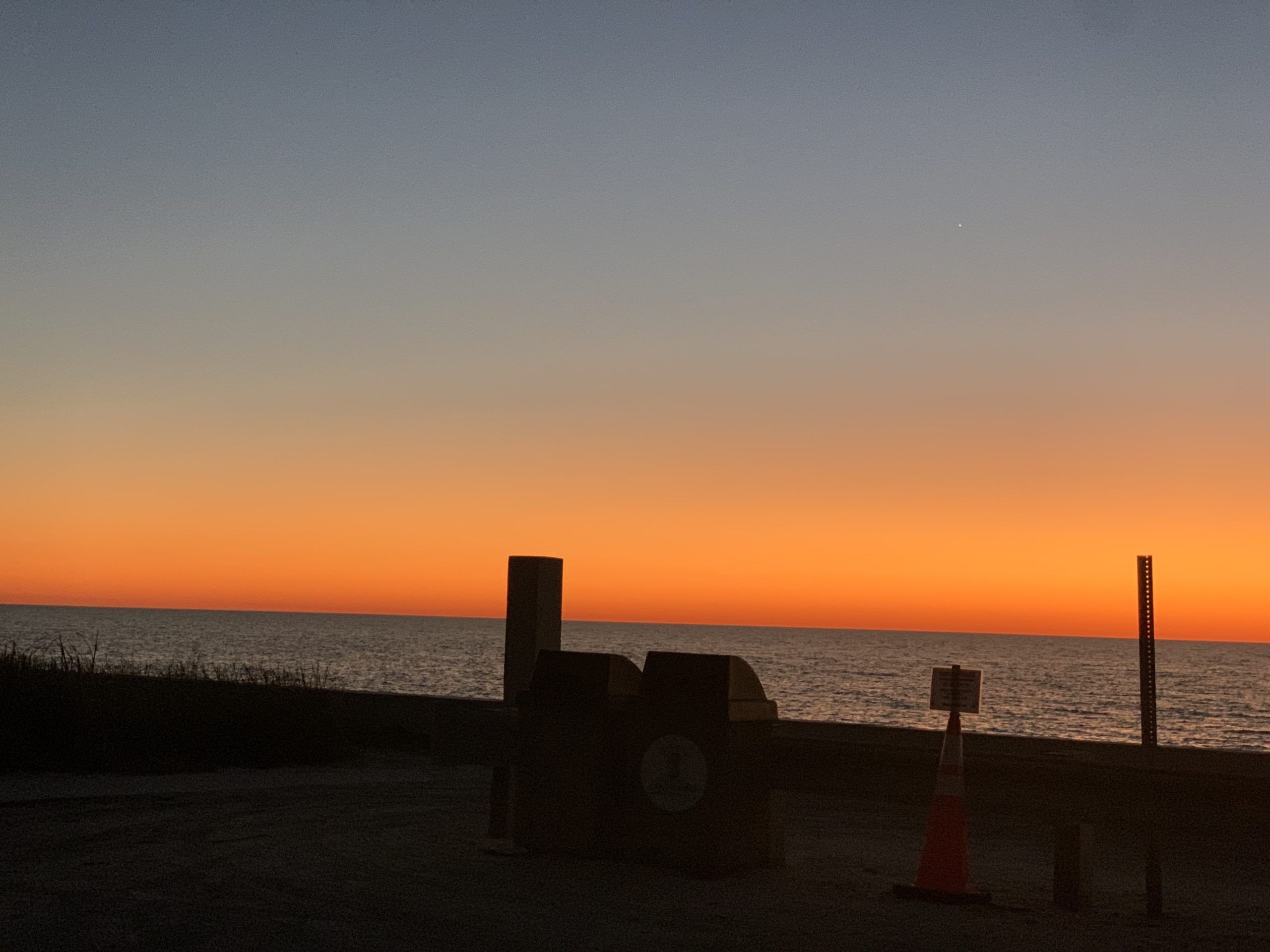The green flash: Have you seen it? Do you know what it is?

Watching the sunset in Boca Grande is one of the most favored traditions, whether you live here year-round or just vacation here. Stopping your day to watch that fiery ball hit the Gulf of Mexico, taking in the peace that comes with it … there’s nothing really quite like it.
A lot of times when you’re down at the beach you’ll hear murmurs about something called “the green flash.”
“I wonder if we’ll see the green flash tonight?” is most commonly spoken, followed by cries of dismay if just one person says, “I saw it!”
Blink once and you might miss it. Of course, you can tape your eyes open and still not see it, while others do.
So is this a real occurrence, or is it all in our minds?
That depends on who you ask.
Sometimes known as “Neptune’s wink,” it is usually seen as a band or vertical ray of bright green light just above the setting sun. To see it you need a clear, flat horizon and a haze-free sky. That last part can be tricky, as African dust is often what makes our sunsets so amazing … albeit hazy.
The last rays of sunlight bending in the atmosphere cause the green fl ash. This is called “refracting.” At sunset the light has the most atmosphere to be refracted by, and the sun is surrounded by shadows of different colors that have been separated out. The atmosphere absorbs many of the colors – such as red, orange and yellow – and blue and purple shadows are scattered. That leaves the color green.
Sometimes, on super-clear evenings, you might also see a “blue flash.” This is because the air is clear enough to allow those purple and blue colors to make it through the atmosphere.
It takes more than normal refraction to create a green fl ash, though. According to the American Association for the Advancement of Science, there are four categories of green flashes: Inferior mirage; mock mirage; subduct flash; and green ray. Almost all of the green flashes you see fall within the first two categories.
Inferior mirages are oval and flat and occur close to sea level when the surface of the water is warmer than the air.
Mock mirages occur higher up in the sky and when surface water conditions are colder than the air. They look like thin slices or strips in the setting sun.
The lesser well-known subduct flash occurs in an hourglass shape due to atmospheric inversion.
That happens when a layer of warm air traps cooler air and moisture close to the ground. A subduct flash can sometimes be seen for up to 15 seconds.
The rarest of the flashes – the green ray – is a beam of green light that shoots straight up from the originating green flash and occurs at the very moment the sun sets. It is caused by hazy air and an originating green flash that is more brilliant than normal.
There is an old Scottish legend that those who have seen the green flash have been given the gift of “the sight,” and that they can read the hearts of others. This might have stemmed from the fact the Celtic people once believed the color green to be evil in nature, and representative of death and misfortune. In pirate lore the green flash means a soul has returned from the dead to this world.
Some say the green flash comes from one staring at the sun too long, which creates a temporary “bleaching” of your red-sensitive retinal pigment.
We prefer to stick with the souls returning from the dead and second sight theory.
“Glimpse you ere the green ray,
Count the morrow a fine day.”
– Old English Proverb





